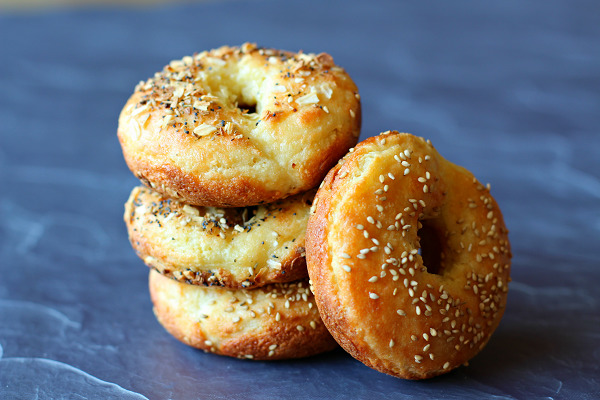
Satisfying Your Bread Cravings on a Low-Carb Diet
Keto Breads, following a low-carb or ketogenic diet doesn’t mean you have to give up bread completely. Thanks to the growing popularity of low-carb lifestyles. There is now a wide range of delicious and satisfying bread options available. Keto breads, specifically designed to be low in carbs and high in healthy fats. Allow you to enjoy the taste and texture of bread without compromising your dietary goals. In this article, we will explore the benefits, ingredients, and types of keto breads. As well as tips for incorporating them into your low-carb lifestyle.
Benefits of Keto Breads: Keto breads offer several benefits for individuals following a low-carb or ketogenic diet:
- Reduced Carbohydrate Content: Traditional bread is typically high in carbohydrates, which can spike blood sugar levels and hinder ketosis. Keto breads, on the other hand, are made with low-carb ingredients. Such as almond flour, coconut flour, or flaxseed meal, resulting in a significantly lower carbohydrate content.
- Increased Healthy Fats: A key component of the ketogenic diet is the consumption of healthy fats. Keto breads often contain ingredients like eggs, butter, coconut oil, or olive oil. Providing a good source of these essential fats.
- Satiety and Long-Lasting Energy: The combination of healthy fats and reduced carbohydrates in keto breads. Helps promote a feeling of fullness and sustained energy, making them a satisfying choice for those following a low-carb lifestyle.
Keto Breads
Ingredients Used in Keto Breads: Keto bread recipes typically feature alternative flour. That are low in carbohydrates and high in fiber and healthy fats. Here are some common ingredients you’ll find in keto bread recipes:
- Almond Flour: Made from ground-blanched almonds, almond flour is a popular choice in keto baking. It adds a nutty flavor and a moist texture to the bread.
- Coconut Flour: Derived from dried coconut meat, coconut flour is high in fiber and imparts a light and fluffy texture to keto breads. It’s often used in combination with other flours due to its absorbent nature.
- Flaxseed Meal: Ground flaxseeds are rich in fiber and omega-3 fatty acids. Flaxseed meal can provide structure and a slightly nutty taste to keto breads.
- Psyllium Husk Powder: This powdered fiber supplement is commonly used in keto bread recipes. To improve texture and help bind ingredients together.
- Eggs: Eggs are a staple in keto baking as they provide structure, moisture, and help bind the ingredients. They also contribute to the protein and healthy fat content.
Types of Keto Breads: Keto bread recipes offer a variety of options to suit different tastes and preferences. Here are a few popular types of breads:
- Keto Sandwich Bread: This is a versatile bread that can be used for sandwiches, toast, or even French toast. It typically has a dense and slightly moist texture, resembling traditional bread.
- Keto Buns and Rolls: Perfect for burgers or as a side with meals. keto buns and rolls provide a bread-like base for your favorite fillings. They can be soft and fluffy or denser, depending on the recipe.
- Keto Bagels: Bagel lovers can rejoice with keto-friendly bagel recipes. These dense and chewy bread rings are typically made with a combination of almond flour, eggs, and cream cheese.
- Keto Flatbreads: Keto flatbreads are thin and flexible, making them ideal for wraps, pizzas, or as a base for appetizers. They are often made with a combination of almond flour and cheese for a satisfying texture.
Keto Breads
Incorporating Keto Breads into Your Low-Carb Lifestyle: Here are a few tips. To help you successfully incorporate keto breads into your low-carb lifestyle:
- Read and Follow Recipes Carefully: Keto bread recipes often require specific measurements and techniques. Follow the instructions closely to ensure the best results.
- Experiment with Flavors and Add-Ins: Customize your breads. By adding herbs, spices, cheese, or seeds to enhance the flavor and texture.
- Toast or Grill for Added Crispiness: For a crispy texture, lightly toast or grill your keto bread before serving. This can help mimic the crunchiness of traditional bread.
- Store and Freeze: Most homemade keto breads have a shorter shelf life than store-bought bread. Store them in an airtight container or freeze slices individually for longer-lasting freshness.
- Explore Recipe Variations: Don’t be afraid to try different keto bread recipes and variations to find your favorite. With the abundance of online resources, you can experiment with different flavors and styles to suit your taste buds.
Conclusion: Keto breads provide a satisfying solution for bread lovers on a low-carb or ketogenic diet. With their reduced carbohydrate content and increased healthy fats. These bread alternatives allow you to enjoy the taste and texture of bread while staying true to your dietary goals. By incorporating these breads into your low-carb lifestyle. You can indulge in sandwiches, toast, and burgers and more, without compromising your progress. So, unleash your creativity in the kitchen, explore the diverse range of keto bread recipes. Available, and discover the joy of enjoying bread while maintaining a low-carb lifestyle.
